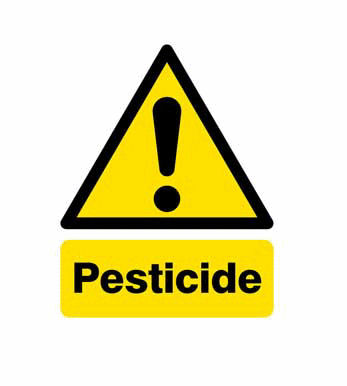The mainstream media inexplicably seems to downplay the links between chronic pesticide exposure and birth defects, but a new study is bringing this topic back into view. Applied pesticides don’t just impact farm-workers. They also take a toll on families who live within 2 miles of a farm that uses toxic pesticides, according to the latest research from the MIND Institute at University of California, Davis Medical Center. From birth defects to other developmental issues, early exposure to pesticides isn’t healthy for babies. What are the chemicals we’re exposing people to, and how do they work? The study cites three of the most commonly used agricultural pesticides in the past 50 years. These three classes of pesticides implicated in the study are: organophosphates, pyrethroids, and carbamates.
The organophosphates are an old class of insecticides; first known in the 1930s and traced to the nerve agent, Sarin. Organophosphate insecticides (once metabolized in the liver) affect the Acetyl Cholinesterase enzyme in an irreversible manner, leading to effects that may lead to eventual death. One organo-phosphate cited in the study, chlorpyrifos, has been used widely in U.S. agricultural settings and was used in residential settings prior to 2002. Farmers and homeowners still use this chemical to kill bugs like fire ants.
The pyrethroids derive from a naturally occurring class of insecticides from flowering perennials. The synthetic pyrethroids gained prominence in the 1980s, but the ancient Romans lauded them for their insecticidal properties. The initial synthetic pyrethroids were fast-acting, but were ineffective within a few short years. That led scientists to develop insecticides that resembled the initial pyrethroid but with better ‘shelf-potential.’ The fact that scientists derive the pyrethroids from plants may be misleading to some – it sounds natural, how can it be harmful? However, the eventual, synthetic cousins of these pyrethroids are potent neuro-toxins. As a neurotoxin, pyrethroids affect musculature contraction in the face and hands in humans. Although similar in toxicity to other pesticides (e.g. carbamates and organo-phosphates to a lesser degree), these insecticides eventually metabolize – your body processes them.
The carbamates are a seemingly innocent class of organic compounds whose origins are traced in the years following World War II. In a patent filing by the DuPont chemical company in 1954, CARBAMATES CONTAINING THE CYCLOHEPTATRIEN-1-OL-2-ONE RING are listed as a new class of insecticide. The ‘carbamate feature or linkage’ may have been attached to cycloheptatriene ring as an afterthought; the ‘ring’ feature is a component of cedar tree biochemistry—a molecule that is known to repel insects. However, 15 years later in a 1969 paper, University of California,Berkeley Professors Lykken and Casida discovered the real reasons for the carbamate’s importance: Carbamates are slowly metabolized by the body and insects as well.
Once the molecule can find its way to the brain, it blocks acetyl cholinesterase reversibly—or interferes with the sense of pain.
Organo-phosphates, pyrethroids, and carbamates have a ‘checkered past;’ without the use of these once lauded chemicals, it is a safe bet that many of us would not have been here to see the 21st century.
In spite of the toxic nature of pesticides, it is unlikely that the agricultural revolution of the 20th century would occur without them. However, we now deal with the repercussions of birth defects and other problems in a dangerous trade-off.
Source: Decoded Science, 27 June 2014
http://www.decodedscience.com/pesticides-pregnancy-birth-defects-mind-s…

- Log in to post comments
